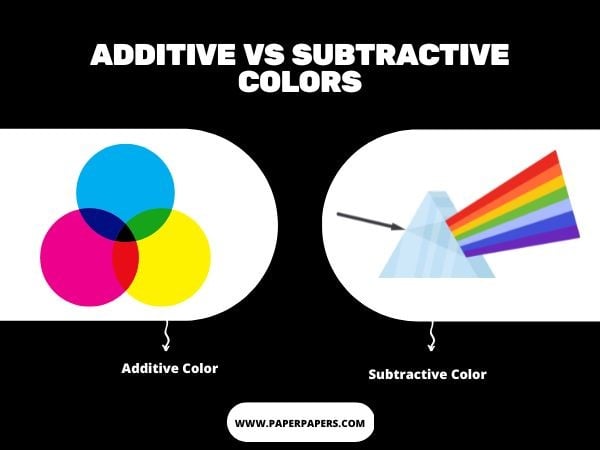Exploring the World of Color Harmonies
As communicative tools, colors deliver the unsaid. They have the power to shape user experience and build strong emotional connections merely with designs. Statistics suggest that 60% of people accept or reject new products based on color.
This makes one thing obvious – colors help us express ourselves better. Hence, it’s essential to learn the unique color harmonies to invoke emotions more effectively. Let’s explore the fundamentals of color harmony and how the phenomenon works!
What is Color Harmony?
Color Harmonies are one of the most effective techniques in color theory. In simple words, it’s mixing up colors to convey the vibe we wish to deliver. Once you master color harmonies, you can make your art stand out and look more professional.
Also, it’s the magic ingredient that artists use to create aesthetically appealing masterpieces. Or, it’s when colors team up to make the outcome look even better. The trick to get this harmony just right? By using the right color combinations that go well together. These therapeutic color combinations can be treat to your mental health.
Color Combinations
Color Combinations work like building blocks that make aesthetic paintings. You don’t just throw colors randomly, but you choose colors that set a certain tone for your art. Once the combinations hit the jackpot, they deliver the feel that’s in your mind.
But with a million colors out there, how do you choose the right combination? Well, the answer to this question depends on your mood. Once you have that in mind, look for color combinations that go well with the mood. This way, your paintings can deliver what you fail to put into words.
If you skip this step and jump straight into picking colors without considering your message first, you might end up with a piece that doesn’t quite hit the mark. Your colors might clash or send the wrong vibe, and your message might get lost in the mix.
So, before you start splashing paint, take a moment to think about what you’re trying to say with your art.
Six Types of Color Harmonies
When it comes to creating color harmonies, the color wheel comes in handy to help you figure out the diversity and relationship between colors. It’s a valuable tool that shows primary colors (red, yellow, blue) and the secondary colors that result from the mixing up of primary colors.
These combinations are based on where colors sit on the wheel and are designed to strike the perfect balance of colors by relying on color harmonies.
Here’s a rundown of the six types of color harmonies, which include:
1. Complementary Colors
Colors positioned on the opposite poles of the wheel are termed as “complementary” colors. Since they sit directly across each other, these colors create a bold and striking effect. If you’re a beginner or someone with little knowledge about color theory, complementary harmony can be a bit too strong for you to work with.
The best part? When used at their full saturation, these colors really pop, which makes them perfect for highlighting stuff and grabbing attention at first glance.
However, it’s best to go easy on them because overusing these colors can be overwhelming to the eye. In case you find the contrast too sharp, tone it down by adding a pinch of black or white. This softens the colors and makes them less aggressive.
Some basic pairs of complementary color harmony include red and green, blue and orange, and yellow and purple.
2. Split Complementary Colors
The Split Complementary scheme is pretty much like the complementary scheme, but it creates a more harmonious and balanced combination. Instead of using two totally opposite colors, this combo uses a more chill approach.
It begins with one main color and then grabs the two colors adjacent to its complement on the wheel.
The tweak between the base color and the two hues next to its complement gives you a pop of contrast, but not as strong as the complementary scheme. It’s a more toned-down version, which makes it the best choice for beginners.
In addition, the split complementary combination hits across different design areas. It adds excitement to your graphics, interiors, and fashion and balances the overall look. When you want to stand out but not scream for attention, this split complementary is the go-to combination for you.
3. Analogous Colors
Analogous is a color harmony derived from colors next to one another on the color wheel. These colors belong to the same family and share similar undertones, hence creating a cozy, harmonious feel. This low-contrast combination brings a sense of peace and is pretty commonly found in nature.
Since the colors sit right next to each other on the wheel, they smoothly transition from light to dark, bringing a sense of balance and unity to your work.
However, the secret to getting analogous colors right is to pick one main color and then add two or three similar shades. To keep things balanced, stick to either warm or cool tones – mixing them up can mess with the vibe. Choose the color of your choice, and add the desired flair to your design.
4. Triadic Harmonies
Triadic color harmony uses a trio of colors to beautify your design. You pick colors evenly spaced on the color wheel, or more precisely, the ones that form a perfect triangle. It’s a game-changer for designers and is their top choice for adding balance, diversity, and visual appeal to their designs.
While triadic harmonies are fairly vibrant, they don’t go overboard like complementary colors. To keep things in check, let one color take the lead and use the others as accents, pretty much like in a split complementary scheme.
A pro tip is to pick one dark color and then go for lighter shades. Given that humans can perceive over 2.8 million hues, you can always play around with shades and tints to come up with a combination that best suits you.
5. Tetradic Harmonies
Tetradic harmonies come in two shapes: rectangular and square. As the name suggests, these color harmonies work with four colors arranged in two pairs of complements. Such harmonies are bold, catch attention instantly, and are perfect for flashy objects.
However, using four colors together might be a bit tricky, making it hard to land a sweet balance. But the quick tip here is to let one color take the lead and use the other three as accents or for smaller bits in your design. Use both warm and cool tones, and you’re golden.
6. Monochromatic Harmonies
Monochromatic harmonies are all about picking out one color family and sticking to it. But you can play with different shades, tints, and tones of the same color. Also, fix the brightness, saturation, and darkness to suit your needs.
Designers love monochromatic schemes because they bring a sense of harmony and unity to their work. Also, the subtle variations within the same color family add depth and interest without complicating things much.
So, when you want your design to look decent and more put-together, monochromatic colors are the way to go.
Bottom Line
Now that you know what the color harmonies are and how they work, it’s time to pick your combination and implement it. The more you experiment, the better you can present your colors. And if you wish to get your message across a bit more creatively, check out Paper Papers and add a creative touch to your business today!




